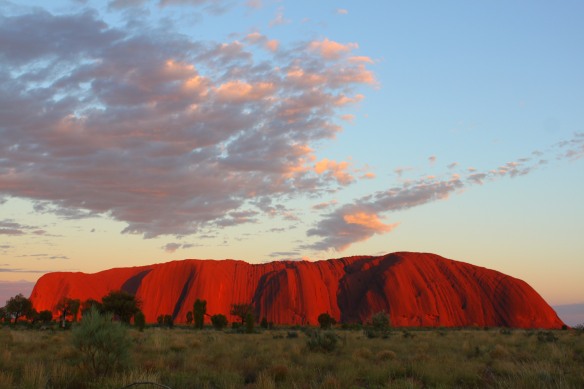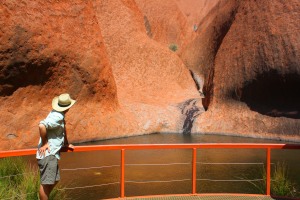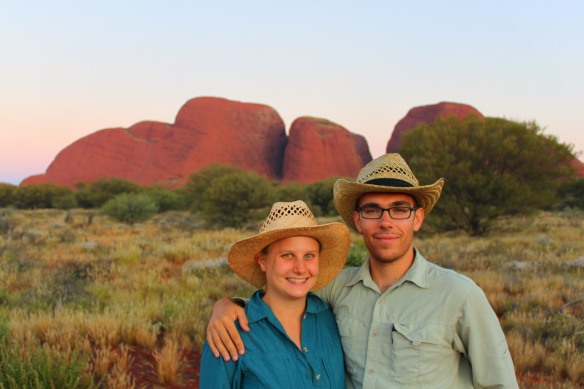There are two theories as to how Uluru and Kata Tjuta were created. Geologists say that these big rocks are 300 million years old. Actually, did you know that the rocks themselves extend far below the ground? 550 million years ago, the rock that comprises Uluru and Kata Tjuta was part of a huge jagged mountain range which eroded into sediment. The sediment collected into certain areas. Then, 500 million years ago, a sea covered the region, and the sediment was compressed and cemented together into giant rocks, but they were still under the sea, sand, and mud. By 300 million years ago, the sea had receded, and geological activity folded the rock as well as lifted the region up above sea level. The rocks that comprise Uluru and Kata Tjuta were tilted and left sticking up above the earth’s surface (but not entirely, it is estimated that they extend up to 4 miles underground.) Weathering has produced the patterns in the rock.
On the other hand, the Anangu believe that at the time of creation, the world was a completely featureless place. Mountains, gorges, waterholes, and other landforms were created by ancestral beings, and the fact that these forms exist today is proof of these ancestors. The patterns in the rock were also produced by the ancestors, and there are stories about each irregularity. This wave was formed by a snake, they say; and this cave with what appears to be a bas-relief inside is actually the unhappy ending to a story about the hare wallaby tribe. (At the creation time, all animals were part of tribes and could talk.)
There was a miscommunication between two tribes, which led to one tribe becoming angry. They then led a surprise attack on the other tribe. Most everyone got away except for these five boys, whose figures were frozen onto the wall. If you look close, can’t you see that one is crouching down, and one is pointing? One is tall and thin, and one is short and fat. Very interesting. Nearby Uluru is another famous rock formation, Kings Canyon. This time, we actually weren’t planning to go there- I had heard of it but I really wasn’t sure what it was all about. However, a German guy we met at a campsite recommended it wholeheartedly, so we added another couple hundred miles to odometer and went out there. It’s sometimes touted as the Australian Grand Canyon, but in reality it’s totally different. It’s very green. Bob and I did the Canyon Rim walk, which goes from the carpark at the bottom of the canyon, up a ridge, around the rim, and down again (it’s supposed to take up to four hours but took us only two) and here is the view we got from the top of the canyon.
Yes, we may be crazy for driving all the way into the middle of Australia just to see some rocks… but I can say, it was totally worth it.







Six days and 2136 miles? Whew!!!!
Yep, it was a long way! In total we ended up driving 5000 miles all over Australia.